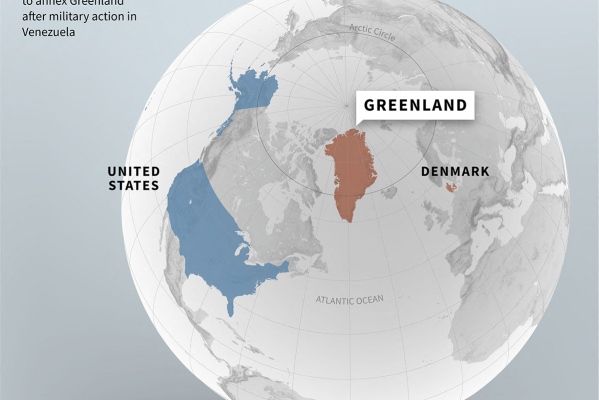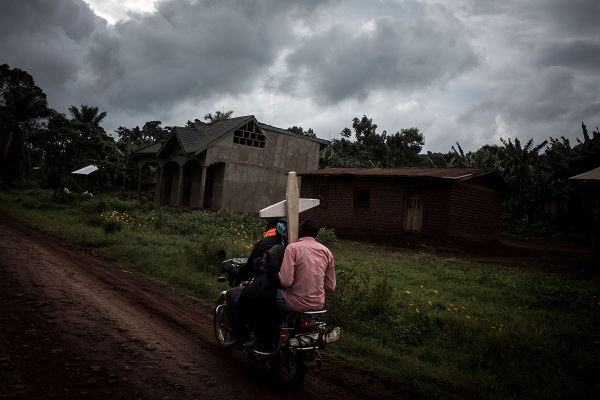No Pope Francis, the world is not in a climate emergency!
Pope Francis has been a vocal advocate for climate alarmism. He believes the world is headed towards a climate doomsday. Recently, in his letter on Care for Creation, the Pope dedicated an entire section, titled “A Time to Restore,” to climate change.

The Pope wrote: “Climate restoration is of utmost importance, since we are in the midst of a climate emergency. We are running out of time, as our children and young people have reminded us. We need to do everything in our capacity to limit global average temperature rise under the threshold of 1.5°C enshrined in the Paris Climate Agreement, for going beyond that will prove catastrophic, especially for poor communities around the world.”
The pope says we are in the midst of a climate emergency. But is that the case?
We Are Not in a Climate Emergency
We would be in a climate emergency if the changes in climate were causing serious harm, or could credibly be predicted to cause serious harm, to ecosystems, food production, and human survival.
But the best evidence is that there is no ongoing manmade climate emergency. Contrary to the claim, the climate in the past five decades has actually boosted people’s livelihood.
There have been record crop outputs and tremendous agricultural success across the globe during the past few decades. Scientists credit this agricultural success to optimum climatic conditions, including increased atmospheric carbon dioxide concentration. Yes, the twin factors that led the Pope to declare an emergency are the very factors that have boosted plant growth not only in agriculture — making food more abundant and affordable for everyone, especially the poor — but in all ecosystems.
Unprecedented improvement in the life expectancy rates — the average number of years a newborn would go on to live — has been registered in almost every part of the world. Life expectancy continues to increase in developing countries. Contrary to the Pope’s claims, vulnerable and marginalized people are rising above poverty as the world has become more efficient with industrial processes, technology, and agricultural production. The portion of the world’s people living in extreme poverty has fallen from nearly 40 percent around 1990 to under 10 percent today.
In other words, people are not dying younger. They are thriving and are better off than at any time in modern history.
No Evidence that We Are Running Out of Time
The Pope claims that “we are running out of time.” But he is wrong again. Most of the current fanfare surrounding the approaching climate doomsday stems from climate forecasts of a few hundred computer climate models run by various scientists around the world.
These models have predicted inaccurate temperatures consistently in the recent past and are nowhere close to becoming dependable. The same was testified before the U.S. House Committee on Science, Space & Technology and confirmed by the most recent assessment of their effectiveness and accuracy. Indeed, simulations from the latest models deviate from real-world observations even more than did those from the previous generation of models.
No matter who operates these models and how blindly people put their trust in them, the models’ relevance to climate reality is determined by their ability to reflect real-world temperatures. The simple truth is that they are faulty and undependable.
Even with the Worst Warming, We Are Not in an Emergency!
Despite the faulty models, let us assume that the model predictions do come true miraculously. Experts indicate that the maximum damage from climate inaction (and the dangerous increase in temperature as per the model forecasts) would be a reduction of global GDP of only around 2 to 4 percent by the end of this century (2100). (The United Nations Intergovernmental Panel on Climate Change, or IPCC, also admits that a loss of 2.6 percent of global GDP will occur only if no action is taken to reduce carbon dioxide emissions — which is highly unlikely.)
That sounds awful at first. But it masks some very good news.
Present annual world GDP is about $81 trillion, or $10,385 per person with global population of 7.8 billion.
The IPCC — which is widely treated as the supreme authority on global climate change— bases its forecasts of global warming on economic modeling that forecasts world GDP in 2100 of anywhere from $309 to $906 trillion.
There is considerable controversy over what world population will be by then, with lowest estimates around 6 billion (a loss of nearly 2 billion) and highest around 16 billion (a gain of over 8 billion). The estimate of 11.2 billion by the UN Department of Economic and Social Affairs is a relatively centrist prediction.
Putting together the GDP and population figures with the estimated 2 to 4 percent loss of GDP from climate change entails that at the end of this century GDP per person will be anywhere from
- a low of $18,540, a gain of nearly 80 percent from today’s (assuming highest population, lowest GDP, and highest GDP loss from climate change); to
- a high of $147,980, nearly fifteen times today’s (assuming lowest population, highest GDP, and lowest GDP loss from climate change); with
- middle-of-the-road estimates of $52,071 (assuming midpoint GDP, midpoint population, and highest GDP loss from climate change) to $53,156 (assuming midpoint GDP, midpoint population, and lowest GDP loss from climate change) —in both cases, more than five times today’s GDP per person.
In other words, even after 2 to 4 percent loss of GDP in 2100, average world GDP per person will almost certainly be nearly double today’s; could be fifteen times today’s; and can be conservatively forecast at five times today’s. People all over the world will be much wealthier than they are today. And that wealth will enable them to thrive despite whatever climate change brings their way.
All of this shows that even the greatest warming in the model predictions does not cause a global catastrophe. The world should not curtail carbon dioxide emissions when poor nations’ development is largely dependent on an emission-intensive economy driven by abundant, reliable, affordable hydrocarbon (coal, oil, and natural gas) energy. Especially not when the damage to their economies from greenhouse gas emissions is extremely insignificant compared to the immediate impact of restrictive emission policies.
Perhaps the Pope can revisit a letter penned to him in 2015, signed by hundreds of experts in climate science, economics, and ethics, which explains why it is unwise and unjust to adopt policies requiring reduced use of fossil fuels for energy on the basis of climate fears.
Vijay Jayaraj (M.Sc., Environmental Science, University of East Anglia, England), is a Research Contributor for the Cornwall Alliance for the Stewardship of Creation.





















